#dorie greenspan
Text
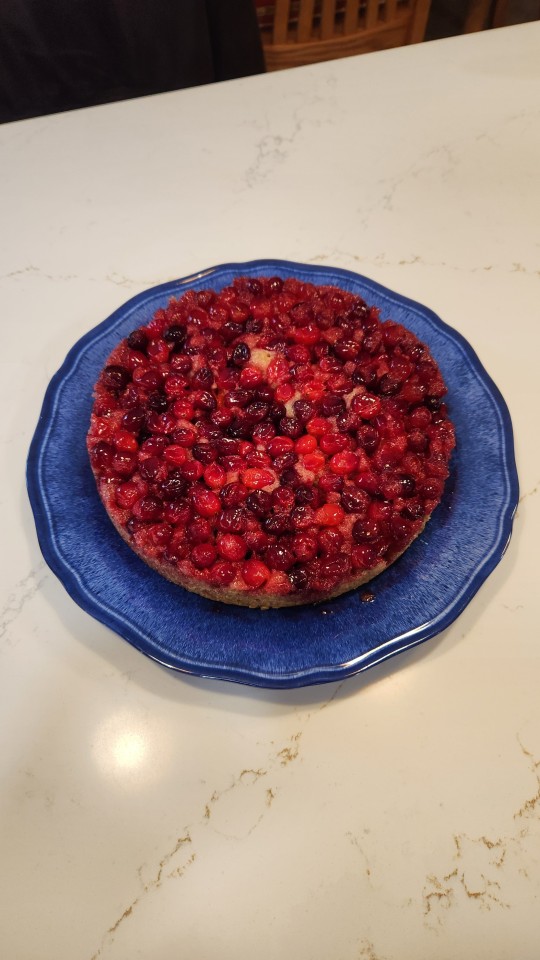
First time making my old standby this holiday season.
6 notes
·
View notes
Text
#flognarde#plums#apples#berries#confectioners sugar#powdered sugar#ground allspice#ground star anise#dorie greenspan#celebrity chef recipe
0 notes
Text
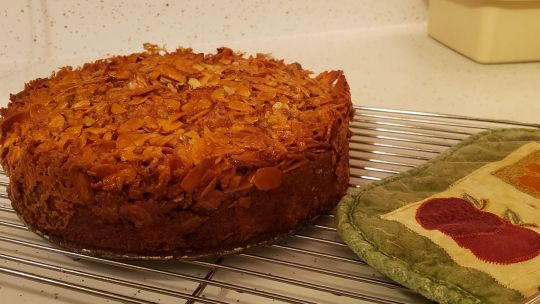

It's beautiful! Like a pile of autumn leaves. This recipe was a little trickier than I anticipated. The timing was a little stressful, the cake undercooked slightly despite the almond topping being done and having baked the cake significantly longer than the instructions called for. I will definitely attempt this again though. Its very pretty, only requires basic ingredients and the crunchy almonds are so good.
#tic tic tic. ding!#baking#the recipe is swedish fika cake by dorie greenspan. the version in her cookbook: Sweet Salty Simple.
6 notes
·
View notes
Photo

Dorie Greenspans ChocolateChocolate Cupcakes
0 notes
Text
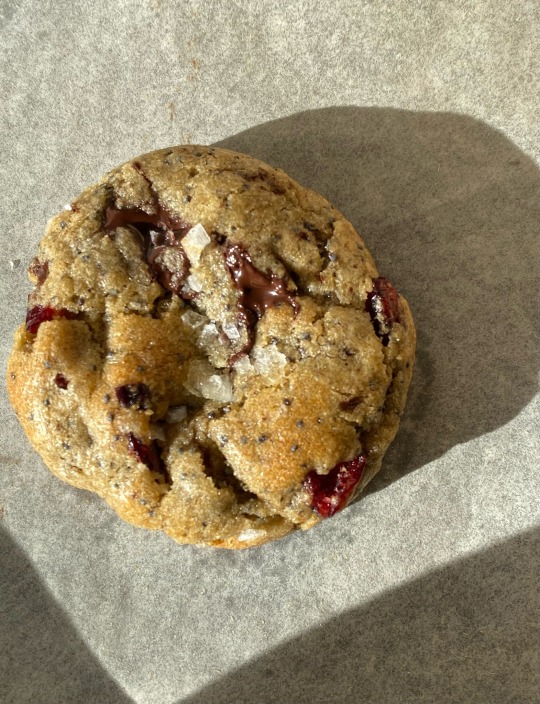

Rye, dark chocolate, cranberry & poppyseed cookie, recipe by Dorie Greenspan
432 notes
·
View notes
Text
Pie Baking Advice
People have a misconception that because glass is a poor conductor of heat it doesn’t make for a good pie pan. But throughout my many decades of baking, I’ve found that not to be the case.
Although metal pans conduct heat better, glass more than makes up for that because it is clear, so radiant energy can pass through the pan and help the crust bake. Metal and ceramic pans impede this.
That means that although glass takes slightly longer to reach the same temperature as the oven, it cooks crusts faster and darker. This is why many cookbooks suggest lowering the oven temperature by 25 degrees when using glass, so the filling can catch up.
The downside with glass, is that it’s more slippery than metal, making it easier for crusts to shrink and slouch, even when secured with pie weights.
Easy solution: Add a touch of baking powder to the dough. It helps the crust expand into the pie plate, which is good no matter what your pie pan is made of.
Personally, I like glass because I hate guesswork. I like to see I’m getting the color I want. But, you can make a great crust in any pan as long as you start with a good dough.
So how to choose a pan? If you want more control and don’t mind a little shrinking (or if you are comfortable experimenting with baking powder), go with glass. If you would rather give up control of the color for a neater shape without altering your dough recipe, choose metal. Ceramic pans make the prettiest presentation, though they are the slowest to bake.
Maybe the better question is: what is your pie priority?
Pre-Baking Dilemma
Should you, or should you not, bake a pie crust before you slip the filling into it?
The question stirs up such a quandary that Dorie Greenspan, a prominent cookbook author and one of the owners of a newly hatched New York cookie company called Beurre and Sel, can’t quite figure out how to answer it. “This is a big issue,” she said. “It’s huge. This is really a problem issue.”
Purely from the standpoint of flavor and color and texture, the simple answer is yes: pre-baking a crust crisps it up and helps prevent it from going soggy when it comes in contact with the filling.
Then you’re ready to pour in the filling (which, in the summer of Ms. Greenspan’s dreams, would be blueberries). You add a top crust before a follow-up stretch in the oven.
But here’s the catch: In spite of all that, Ms. Greenspan usually does not bake her crust in advance. To affix that top crust, you have to use a sleight-of-hand, moistening the rim of the pre-baked bottom crust and getting the raw dough of the top crust to stick to it. “Somehow it feels like a trick and un-American,” she said. “It’s not the way American pies are supposed to be made. I prefer it pre-baked, but I don’t do it.”
Maybe, she suggested, a touch of sogginess is not the end of the world. What she’ll sometimes do, before filling the bottom crust, is to sprinkle an absorbent layer of challah pieces or cake crumbs along its top, to sop up (theoretically) some of the liquid.
The Right Thickener
You want to cut nice, neat wedges of that summer pie. The pieces of fruit must nestle cozily and close, thickly bound, and not run off into a soupy puddle. Do you reach for flour to bolster the filling? Cornstarch? Arrowroot? Tapioca? Nothing?
Ron Silver, an owner of the TriBeCa restaurant Bubby’s who co-wrote “Bubby’s Homemade Pies” and has held a pie social with home bakers for the last 10 years, said his thinking on thickeners has evolved.
He started using just flour years ago when he tried to enter the Pillsbury Bake-Off. (He was disqualified from the competition for amateurs because he did his baking at Florent, where he was the breakfast cook.) But now he prefers something along the lines of a butter and flour roux.
“I toss the fruit with flour and then add melted butter,” he said. “It’s classic and the most flavorful.”
“When you have very juicy fruit like raspberries or cherries, instant tapioca is also good,” he said. Tapioca turns clear and glossy, does not impart a starchy flavor and adds interesting little gelatinous beads to the texture.
But for a fresh blueberry pie, Mr. Silver’s favorite, his choice is cornstarch. He cooks half the berries to make a thick sauce with sugar, lemon juice and the starch, which has first been dissolved in cold water. He then folds this mixture into the rest of the raw blueberries to fill a cooked pie shell. He does not bake the pie further, but lets it set for about two hours before serving.
You might get away with no thickener (just sugar and melted butter) especially with denser fruits like figs, stone fruit, apples and pears. But thickened or not, it’s important to wait two to three hours before cutting into the pie, allowing the filling time to settle so the juices released by the oven’s heat are reabsorbed.
Choosing the Fat for a Crust
As American as apple pie, the saying goes. But according to the food scientist Harold McGee, our national identity resides specifically in the crust.
“As a country,” he said, “we value a macroscopic discontinuousness in our pie crust.”
To translate: A pie crust that shatters into large crumbs and shards when you press your fork through it is good. A crust that crumbles into sand or needs to be sawed through is bad.
Fortunately, that patriotic, macroscopic discontinuousness can be achieved with flour, water and almost any cool, semisolid fat such as butter, lard, suet or vegetable shortening.
But which is best?
When Mr. McGee wrote his magisterial study “On Food and Cooking” in 1984, he came down in favor of vegetable shortening, because its consistent proportions of fat, water and air make it easier to produce flaky crusts. But since then he has modified that position, leaning toward the savor that butter and lard add. (Also, the hydrogenation process used to make vegetable shortening was later found to produce trans fats, which are unhealthy when consumed in large quantities.)
For a truly ideal pie crust, you would need a fat with the flavor of butter, the water content of lard and the temperature flexibility of vegetable shortening. When temperature is an issue, shortening is the clear winner. While a crust is being mixed and rolled, the butter needs to stay between 58 and 68 degrees to achieve the right texture: shortening works at anywhere from 53 to 85 degrees.
“The Fourth of July brings a hot kitchen and hot hands,” Mr. McGee said. He said that not only the fat but also the flour should be chilled until the last possible moment.
Lacking that fantasy fat, Mr. McGee said the proper choice is a matter of technical skill and personal preference. Sometimes the flavor of butter can be too aggressive: just as many chocolate cakes and banana breads are made with neutral oil to let the flavor of the main ingredient shine through, a plain crust made with vegetable shortening can be desirable.
#pie baking#baking#baking tips#traditional femininity#baking tools#femininity#traditional feminine#traditional values#traditionalism#traditional gender roles#traditional woman#traditional wife#women in the kitchen
14 notes
·
View notes
Text
i don't believe in much but i do believe in the healing power of dorie greenspan's world peace cookies
1 note
·
View note
Text
After that one, the next book I’m aiming for is Around My French Table by Dorie Greenspan and I would need to read:
Secondhand Time: The Last of the Soviets by Svetlana Alexievich
In Search of Sisterhood: Delta Sigma Theta and the Challenge of the Black Sorority Movement by Paula Giddings
Empress Dowager Cixi: The Concubine Who Launched Modern China by Jung Chang
A Rope From the Sky by Zach Vertin
Putin’s World: Russia Against the West and With the Rest by Angela Stent
Mir Iskustva: Russia’s Age of Elegance (1. Need to fix this on my phone with cyrrilic keyboard BUT the person who titled it used Ukranian alphabet letters anyway so whatevs and 2. it’s an art book so idk if it counts) by ??
Perfect Remains and Perfect Prey by Helen Fields
Madame Bovary by Gustave Flaubert
The Picture of Dorian Gray by Oscar Wilde
Orlando by Virginia Woolf
Tender is the Night by F. Scott Fitzgerald
The Portable Dorothy Parker by Dorothy Parker
The Bell Jar by Sylvia Plath
In Cold Blood by Truman Capote
Lolita by Vladimir Nabokov
One Hundred Years of Solitude by Gabriel Garcia Marquez
In the Know: The Classic Guide to Being Cultured and Cool by Nancy MacDonnell
The Binding by Bridget Collins
All In Good Taste by Kate Spade (another one that’s not really a reading book? I think my plan is to check it out and if it’s pretty and I want to own it I will buy it)
The Taster by V.S. Alexander
Hunting Annabelle by Wendy Heard
Circe by Madeline Miller
Actually getting this down made me take some books off the list. Not shown are like 5 books about growing vegetables and keeping chickens which I’m just going to skip bc me having a garden/chickens is so far in the future that I don’t think reading about it now would be rewarding.
2 notes
·
View notes
Photo
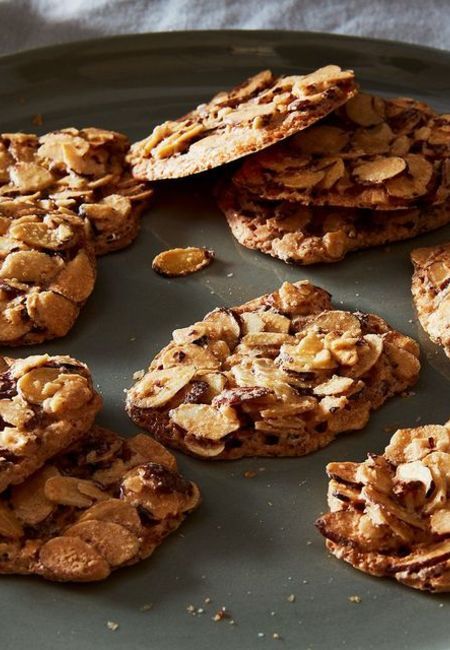
Dorie Greenspan's 3-Ingredient Almond Crackle Cookies
Confidence in the kitchen has never been easier with Dorie Greenspan's foolproof 3-Ingredient Almond Crackle Cookies. Prepare to impress with this simple yet exquisite recipe.
0 notes
Text
50 Years of Island Books: Kay Wilson
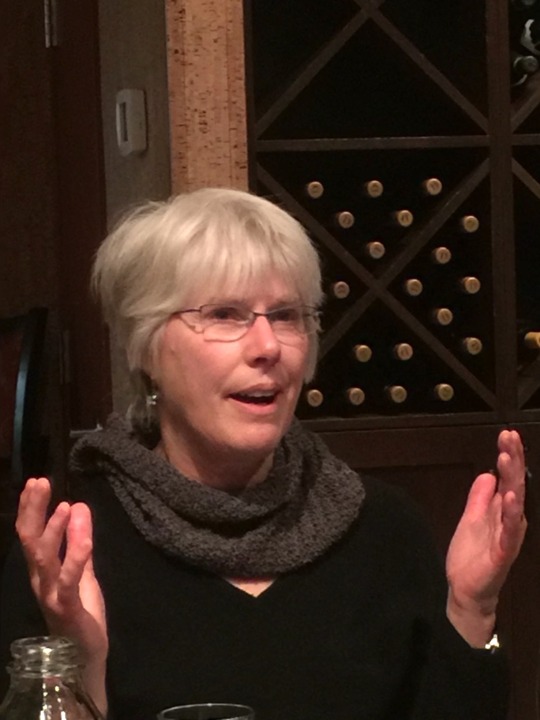
Kay Wilson worked for Island Books from 2000 until 2016. Now Kay and her husband live on Lummi Island, surrounded by a field with two big gardens and many fruit trees. She helps raise money for the local library by running a book sale in the summer, partly to help the community and partly to feed her need to be buried in books. Their three children and old friends are scattered around, and Kay says going to visit them is a lovely way to be out in the world.
Miriam: Can you tell me about how you came to work at Island Books? Who did you work with, and what was happening in the world then?
Kay: Around 1982, I joined the Red and Black Books Collective, a politically progressive store that had been really important to the Seattle queer and feminist community since 1973. At first I volunteered, eventually becoming a paid staff book and card buyer. It was an incredible place to work and I was there for 16 years, but when the store was clearly not going to make it, I quit around 1998 and in 1999 went to work in a tiny green grocery that was in my Ballard neighborhood. I didn't want to work at another bookstore, partly because our family was fishing in the summers in Alaska and it seemed hard to find any bookstore that would accommodate that schedule. This little grocery served a sweet little Ballard neighborhood and it was full of regulars. Among those regulars were Roger and Nancy Page living as they did right around the corner. Roger and I especially hit it off. We had lots of things in common—roses, gardens, cooking, and so it happened, books and the selling of them. Eventually he asked me to come work at Island Books. Did I want to go to Mercer Island from Ballard every day? Did I want to mend my book-selling broken heart and do it again? I went over there and took a look. I was introduced to the staff and said okay.
This was an era when Amazon was eating independent bookstores for breakfast. So many everywhere. Roger clearly understood that in order to survive and thrive, his bookstore had to have really smart, thoroughly engaged booksellers who truly knew about both books and people. Staff there when I started were Cindy Corujo, Lori Mitchell, Wendy Crawford, Garry Jarman, and another part timer, Nancy Watkins. Not too long after, wonderful Nancy Shawn came (also a Red and Blackie) and then the unforgettable Marni Gittinger. These people each had their special way of making sure the customers got what they wanted, and many books they had no idea they wanted. We loved each other, had each other's backs, sometimes drove each other crazy. We had a lot of fun, insisted upon a whiskey in the backroom at 5pm if we weren't too busy (thank you Roger for keeping a bottle of Irish in the cupboard).
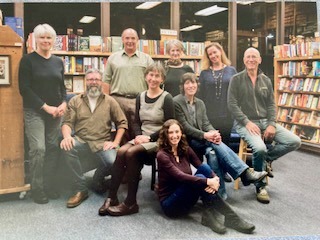
Miriam: It was such a fun time. As I recall, one of your specialties was the cookbook section. Do you remember any particular cookbooks you hand-sold time and again?
Kay: I started collecting cookbooks long before I came to Island Books, so it was always fun and easy to help folks find a good one, either for themselves, or as a gift. One of my favorites was and still is Tender by Nigel Slater, or really any of his glorious cookbooks, which can easily be used as lovely books to just sit and read, like getting a long letter from your auntie, the fantastic cook. Also, the books of Laurie Colwin, Home Cooking and More Home Cooking. These have recipes, but also stories that make you feel like having a dinner party or making an impromptu lunch for a surprise visitor is no big deal. James Beard's American Cookery is still in print and is so fantastic, a classic for a reason, and more fun than The Joy of Cooking, but fills a similar place on your cookbook shelf. Dori Greenspan's wonderful French cookbooks, books by Madhur Jaffery for her beautiful Indian cooking, Alice Waters' Chez Panisse Vegetables, as much for the illustrations as the recipes. The brilliant locals, Renee Erikson, Tom Douglas. Ottolenghi for his gifted many-ingredient recipes (forget making something with three or four items!)
Miriam: This is making me hungry. Let's walk out of the cookbook section. Will you give me a tour of the rest of the shelves? Tell us some of your favorite hand-sells of all time.
Kay: Of the other books I love and sold to many customers over the years, here are a few:
The books of Louise Erdrich, really almost anything, but I think The Master Butchers Singing Club is so very beautiful and original. It's not that her books don't have sorrow in them, but they are books of humanity and hope in the end. And if you want a whole universe to enter into, you can start with Love Medicine and just keep going.
White Teeth by Zadie Smith. Her first book was so exciting, historical fiction in a way, written with such exuberance for the words on the page.
Small Island by English writer Andrea Levy. Written from the point of view of four people deeply affected by World War II whose lives intersect, it's a moving story about who belongs and why, with insight into race and class without at all being a polemic.
Winter's Tale by Mark Helprin. Magical realism for those who think they won't like it. It's a riot, a huge, passionately told story of New York City, as if Dickens and Garcia Marquez decided to write a beautiful love story about an orphan who lives through all the ages of the city.
In the Fall by Jeffrey Lent. Historical fiction that begins at the end of the Civil War, about an escaping enslaved woman who rescues a wounded Union soldier and goes with him home to Vermont, where they marry. Lent has a few more books, all worth reading, but this one is memorable.
The poetry of Mary Oliver, especially White Pine. Just stand there and read the poem "William." If you don't buy that book, you might be dead to poetry.
Michael Ondaatje's The English Patient. (The movie is good, but oh, the book!)
Pema Chodrun's When Things Fall Apart. Life saving help for someone going through difficult times. Simple, a way in towards kindness to yourself and others, even the difficult ones.
Arctic Dreams by Barry Lopez. His writing about the natural world and himself in it is just enthralling.
A Midwife's Tale by the American historian Laurel Thatcher Ulrich. This book, about Martha Ballard, a midwife in late 18th century Maine, alternates between Ballard's diary and Ulrich's commentary about life then, insightfully revealing how much the world has changed materially, but still we recognize ourselves as not so different.
Anything by Oliver Sacks, especially Musicophilia. As is his usual, multiple stories about people who have had amazing neurological conditions that are affected by music.
Swimming to Antarctica by Lynne Cox. Cox's memoir about her open water long distance swimming is just a great inspiring read. Imagine swimming the English Channel in 38 degree water in record time with just a swimsuit on. What a woman!
The Ghost Map by Steven Johnson. This book about how it was finally figured out how cholera and the London water system were interconnected will make you deeply grateful for that glass of water you can drink right out of your tap, at least if you live in the right place.

Miriam: Thank you for sharing these, Kay, and it's so good to hear from you. We all get numb to book recommendations sometimes, but this is such a cultivated list! I bet Island Books customers will find great pleasure in those books and can confidently pick them up knowing you have a lifetime of expertise informing the recommendations. You're a cherished part of Island Books' history, and we are all sending you bookstore love.
To our Island Books community: If you are interested in ordering any of Kay's wonderful recommendations, please email [email protected]. We ask for your patience, as it may take a little extra time.
In the next 50 Years ofIslandBooksinstallment, I’ll be talking to local legend and Mercer Island children's concert musician Nancy Stewart, the founder of Sing With Our Kids, who has been involved with Island Books for forty-some years and continues to lead our regular childrens Story Times.
—Miriam
0 notes
Text
#miso#gochujang#beef stew#stew meat#dorie greenspan#celebrity chef recipe#winter food#red wine#fresh ginger#beef broth
0 notes
Text
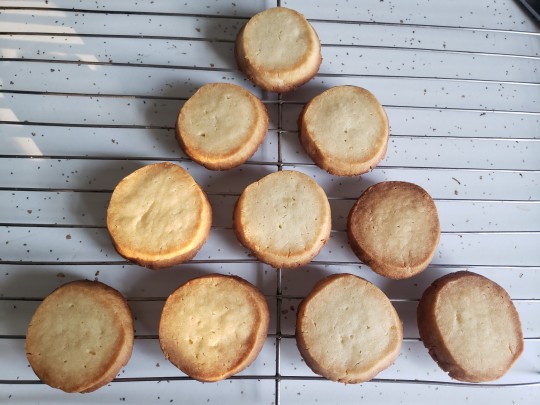
Shortbread cookies again because I didn't like the flavor of the checkerboard batch. The recipe is from a cookbook by by Dorie Greenspan.
3 notes
·
View notes
Quote
It tips French but shrugs at tradition.
Dorie Greenspan about a cookie
0 notes
Text
Herbed Cottage Cheese Biscuits
Via Dorie Greenspan.
2 cups flour, plus more for the work surface
1 tablespoon baking powder
1/2 to 3/4 teaspoon fine sea salt
1/4 teaspoon baking soda
1/2 cup full-fat cottage cheese
1/2 cup cold whole milk
6 tablespoons (3/4 stick) very cold unsalted butter, cut into small chunks
2 to 3 tablespoons minced fresh herbs, such as dill, basil, chives, parsley, cilantro or a…

View On WordPress
1 note
·
View note
Text

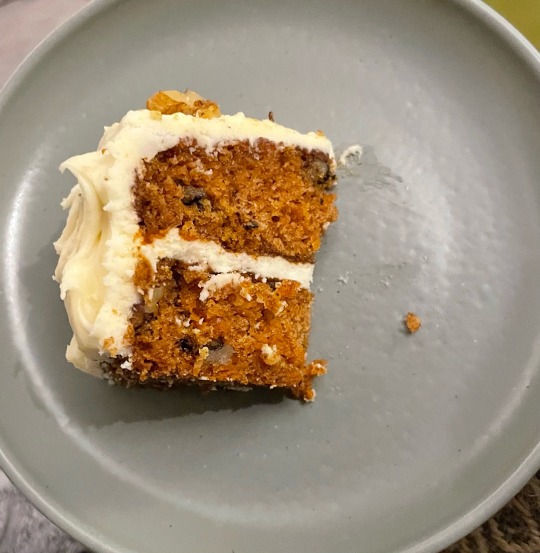

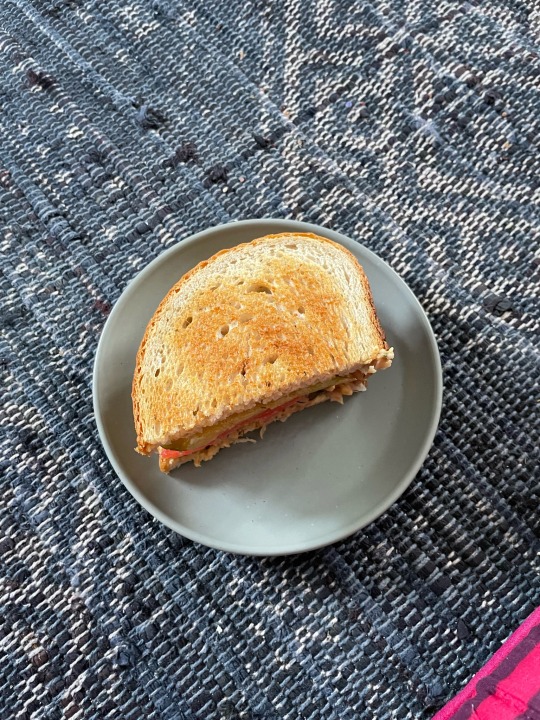
Plates from December
Descriptions:
snack plate with aged cheddar, oat and cranberry crackers, a clementine, and chili jam
carrot cake (dorie greenspan) with brown butter cream cheese icing (claire saffitz)
bourbon chocolate chip cake (aleksandra crapanzano) with brown butter cream cheese icing
chickpea salad sandwich with lightly salted chips inside
#food#kitchen times#In all seriousness the only time I’m motivated to eat is with my sister#she has a small kitchen but cooking/eating with her is the best#I’m reminded that food isn’t just sustenance when I’m with her
0 notes
Text
Spent the weekend food prepping for the week and putting up Christmas lights. Now I’m trying to figure out what cookies to make for Christmas care packages. Thinking of making: almond sugar cookies, chocolate chip cookies, world peace cookies (Dorie Greenspan recipe), cinnamon swirl cookies, and granola.
I’m hoping this week will be light so I can get it all done by Wednesday…. Fingers crossed
#christmas cookies#meal prep consumes my day#short ribs for dinner and Moroccan chicken for lunch#overnight oats with homemade granola for bfast#I need more then two days off ;-;
1 note
·
View note